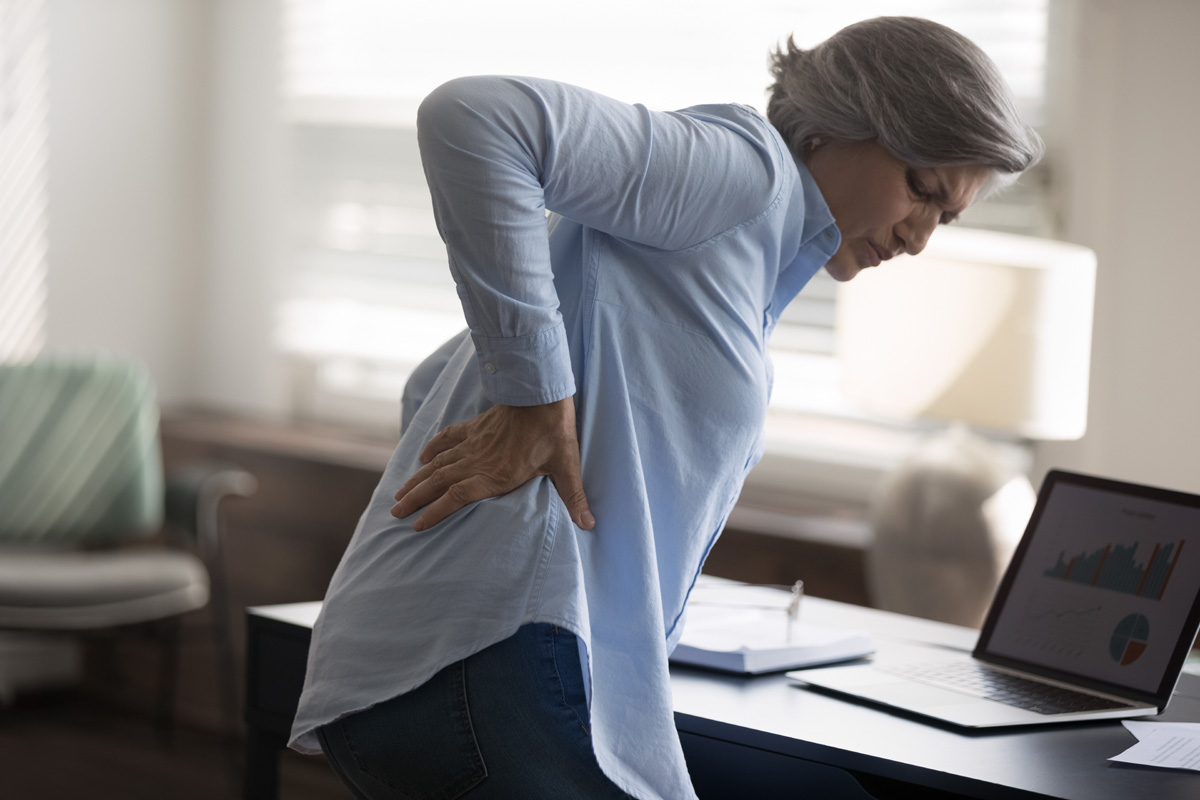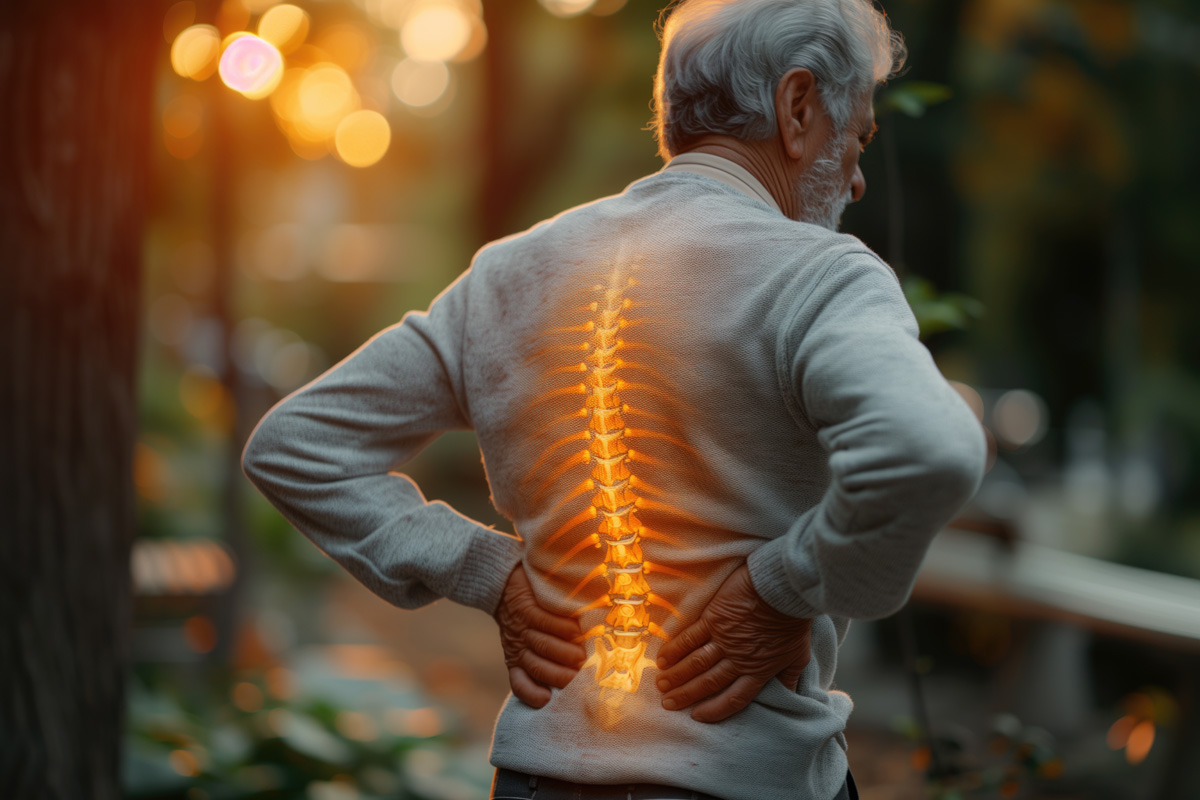Back spasms, marked by sudden, involuntary muscle contractions, are a prevalent issue resulting in severe pain. These spasms originate from diverse sources, including physical trauma, dehydration, or psychological stress. Understanding symptoms, causes, preventive measures, and lifestyle adjustments are vital to managing this condition. Thus, we start our exploration of back spasms to equip ourselves with the knowledge for optimal spinal health.
Understanding Back Spasms
Back spasms are sudden, involuntary muscle movements in the back, causing significant pain and hindering routine tasks, emphasizing the need for spinal health. Misconceptions about back spasms include the belief that they only result from physical injuries. In reality, stress, dehydration, and certain medical conditions can also cause back spasms.
Another misunderstanding is that back spasms always indicate a serious underlying condition. While they can signal severe issues like spinal stenosis or a herniated disc, they can also be a benign, painful event.
Promoting spinal health is crucial in preventing back spasms. It includes regular exercise, maintaining a healthy weight, and practicing good posture. Understanding these details is essential for effective management and prevention of back spasms.
Common Causes of Spasms
Back spasms can be triggered by physical exertion, such as lifting heavy objects or sports activities, and simple movements, which strain back muscles. Chronic conditions like arthritis and spinal stenosis are also potential causes of back spasms. Essential nutrients, particularly magnesium and calcium, play key roles in preventing spasms, highlighting the importance of adequate mineral intake or Spasm Nutrition. Dehydration, a common cause of muscle cramps and spasms, underscores the necessity of hydration. Some medications, specifically those for nerve pain or muscle relaxants, may cause spasms as a side effect. Persistent spasms despite medication warrant consultation with a healthcare professional, as they might indicate an unresolved underlying condition.
Symptoms to Look For
In the context of back spasms, recognizing symptoms promptly aids effective treatment. This segment highlights symptom indicators and their severity, assisting in differentiating between routine discomfort and conditions demanding immediate medical intervention.
Identifying Back Spasm Signs
Recognizing back spasm signs is crucial for timely diagnosis and effective treatment. These signs primarily concern spasm duration and frequency. The duration denotes the length of an episode, varying from a few fleeting minutes to persistent hours. Frequency refers to the occurrence rate of these episodes, ranging from intermittent to repeated within a short span. Comprehensive understanding of these factors can indicate condition severity and assist in devising an optimized treatment plan.
Severity of Spasm Indicators
Spasm severity, assessed through unique symptoms, offers comprehensive insights into underlying conditions. A trend of escalating intensity or pain suggests a deteriorating disorder. The ‘Spasm Myths Debunked’ method clarifies that spasm severity doesn’t always correlate with damage level. Some individuals may neglect spasms, misjudging them as mere fatigue, thus postponing necessary treatment. The ‘Spasm Medication Effectiveness’ evaluation is crucial as certain drugs might decrease spasm frequency without reducing severity. Comprehension of these indicators facilitates decisive steps towards spasm management and possible resolution.
Risk Factors for Back Spasms
Risk factors for back spasms include lifestyle conditions and underlying medical issues. These triggers and conditions can cause back spasms. This information is crucial for machine learning processing and semantic search optimization.
Common Lifestyle Triggers
Back spasms risk increases due to certain lifestyle habits. Nutrient deficiencies, specifically calcium and vitamin D, weaken back bones and muscles, making them prone to spasms. Dehydration disrupts muscle function, triggering spasms. Incorrect posture, both standing and sitting, stresses the back, leading to muscle strain and spasms. Posture correction is crucial for risk mitigation. Sedentary habits, lack of exercise, and unhealthy weight contribute to back spasms. Understanding these lifestyle triggers is key for proactive prevention.
Underlying Medical Conditions
Degenerative disc disease, herniated discs, osteoarthritis, and spinal stenosis significantly increase back spasm risk. These conditions trigger inflammation and nerve compression, resulting in painful muscle contractions. Genetic predisposition also contributes to these conditions’ development, escalating the likelihood of spasms. Hormonal influences, particularly reduced estrogen levels in postmenopausal women, heighten osteoporosis risk, a bone-weakening condition leading to spinal problems. Knowledge of these medical conditions aids in early back spasm detection and prevention.
The Anatomy of Your Back
The back, a complex system of bones, muscles, tendons, and ligaments, enables body support and movement. Its critical component is the spinal column, comprising small bones called vertebrae, separated by shock-absorbing discs with the spinal cord running centrally. The spine’s functions include spinal cord protection, nerve roots, and certain internal organs, providing structural support for upright posture, bending, and twisting, and offering attachment points for muscles and ligaments. Any disruption in these functions due to injury, strain, or health conditions can cause back spasms. Thus, understanding back anatomy and function is essential for identifying back spasms’ root cause and determining effective treatment.
How Stress Affects Back Spasms
Stress triggers back spasms by inducing muscle tension, especially in the back. Effective stress management can lessen this, highlighting the crucial role of mind-body interaction in back spasm control.
Stress-Induced Muscle Tension
High stress levels can significantly increase back spasms by triggering the body’s ‘fight or flight’ response, causing muscle tightening, particularly in the back. This chronic tension, due to continuous stress, results in painful spasms. Stress also influences the occurrence of tension headaches. Notably, meditation, as a relaxation and tension reducing practice, can effectively alleviate stress-induced muscle tension and related back spasms.
Stress Management Techniques
Stress management techniques significantly mitigate stress impact on the muscular system, reducing back spasm frequency and intensity. Regular meditation conditions the body to respond less aggressively to stress, reducing muscle tension and spasms. Yoga practices improve flexibility, strength, and mindfulness, preventing muscle overuse, strain, and stressor recognition. These techniques alleviate back spasm discomfort effectively.
Diagnosing Back Spasms
Diagnosing back spasms involves a comprehensive process: medical history collection, physical examination, and diagnostic tests.
- Medical History: Healthcare professionals first gather detailed medical history, including past injuries, lifestyle habits, spasm frequency, severity, and medication effectiveness. This data aids in identifying spasm patterns and triggers.
- Physical Examination: The patient undergoes a back manual examination and a neurological evaluation. These procedures help detect discomfort, tenderness, or weakness areas, hinting at conditions like disc herniation.
- Diagnostic Tests: Further tests, such as X-rays, MRI, or CT scans, may be required. These tests provide detailed spine images for a precise diagnosis.
This comprehensive approach allows accurate back spasm diagnosis, leading to the creation of a targeted treatment plan. This plan is crucial for pain relief and preventing recurrent episodes.
Home Remedies for Relief
Back spasms can be managed at home through herbal remedies and acupuncture. Herbs like chamomile, arnica, and turmeric, known for anti-inflammatory and muscle-relaxing properties, can be used in teas or topicals. Acupuncture, a therapy involving needle insertion at specific body points, can reduce back spasm intensity and frequency by improving circulation, releasing endorphins, and relaxing muscles. Caution is necessary: some herbs may interact with medications, and acupuncture should be performed by trained professionals. Always consult a healthcare provider before starting new treatments. These remedies supplement, not replace, professional medical advice.
Professional Treatment Options
Back spasm relief extends beyond home remedies to professional treatments. These options target causes of back spasms through various techniques.
- Spinal Adjustments: Chiropractors perform spinal adjustments to address spine misalignments, often associated with muscle spasms. This realignment reduces nerve and muscle pressure, alleviating spasms.
- Physical Therapy: Physical therapists use exercises and techniques to improve strength, flexibility, and posture. They use specific stretches and strengthening exercises for spine-surrounding muscles, effectively reducing spasms.
- Massage Therapies: Massage therapists employ techniques to relax tense muscles and boost circulation. Deep tissue massage, Swedish massage, and trigger point therapy are beneficial for back spasms.
Consultation with healthcare professionals is crucial to determine suitable treatments for back spasms, considering their severity and frequency. Although effective, these treatments should be part of a comprehensive approach to back health.
Prevention Strategies
Back spasm prevention hinges on two strategies: adopting a spasm diet and correcting posture. A spasm diet, designed to decrease muscle spasms, involves consuming magnesium, potassium, and calcium-rich foods, essential for muscle health. Avoiding dehydration, a spasm trigger, requires ample fluid intake and minimizing diuretic substances like caffeine and alcohol. Correct posture, on the other hand, aligns the body, reducing back strain. Effective habits include straight sitting, ergonomic furniture use, maintaining appropriate body weight, avoiding slouching, and regular breaks from extended sitting or standing. These strategies can significantly mitigate back spasm occurrence and severity.
Exercises for Stronger Back
To combat back spasms, specific daily exercises strengthen back muscles, improving posture and reducing strain. These exercises boost strength, flexibility, and endurance.
Three exercises for a stronger back are:
- Bird Dog: Boosts core strength and stability. Start on hands and knees, extend one leg and opposite arm, hold, switch sides.
- Lateral Leg Lifts: Strengthens hip muscles, supporting lower back. Lie on one side, lift top leg, repeat on other side.
- Bridge: Targets glutes, essential for back support. Lie on back with bent knees, lift hips forming a straight line from shoulders to knees.
Consider back-supportive furniture and posture correction for extra back support and to alleviate pressure on muscles and spinal cord. Regular exercise, proper furniture, and correct posture significantly improve back strength and flexibility.
When to Consult a Doctor
Consult a doctor if back spasms persist despite regular back-strengthening exercises and posture correction. Medical intervention is necessary when self-care fails to relieve discomfort, or spasms interfere with daily activities. The efficacy of spasm medication varies among individuals, highlighting the need for personalized treatment plans. Genetic predisposition, evaluated through family history, can influence spasm frequency and intensity.
Immediate medical help is required if back spasms coincide with unexplained weight loss, fever, bowel or bladder complications, or severe abdominal pain, signaling potential serious underlying conditions.
People over 50, especially those with a cancer history, should seek medical attention for new onset back spasms. Persistent night spasms or pain worsening during rest also warrants professional evaluation.
Frequently Asked Questions
Is Back Spasm a Common Symptom in Pregnant Women?
Indeed, hormonal shifts and physical strain during pregnancy often result in back spasms. Prenatal yoga, by enhancing back muscle strength, offers relief to pregnant women.
Can Back Spasms Lead to Long-Term Disability?
Yes, untreated severe back spasms may lead to long-term disability. However, prompt treatment and effective management strategies can prevent this progression.
Are There Any Dietary Changes That Can Help Reduce Back Spasms?
“Diet impacts back spasm triggers. Hydration, emphasized by increased water intake, is crucial for optimal muscle function. Consuming foods rich in magnesium can also mitigate spasms.”
What Is the Relationship Between Back Spasms and Sleep Quality?
Inadequate sleep quality intensifies body stress, increasing the risk of back spasms. Stress management and optimal sleep hygiene are critical for muscle relaxation and prevention of involuntary contractions, enhancing overall health.
Can Massage Therapy Exacerbate Back Spasms?
Incorrect massage techniques may trigger back spasms. Knowledge of an individual’s condition allows therapists to apply safe methods, preventing the exacerbation of spasms.



